Forums
- Forums
- Duggy's Reference Hangar
- RAF Library
- Avro York
Avro York
Post a reply
- Go to Previous topic
- Go to Next topic
- Go to Welcome
- Go to Introduce Yourself
- Go to General Discussion
- Go to Screenshots, Images and Videos
- Go to Off topic
- Go to Works in Progress
- Go to Skinning Tips / Tutorials
- Go to Skin Requests
- Go to IJAAF Library
- Go to Luftwaffe Library
- Go to RAF Library
- Go to USAAF / USN Library
- Go to Misc Library
- Go to The Ops Room
- Go to Made in Germany
- Go to Campaigns and Missions
- Go to Works in Progress
- Go to Juri's Air-Raid Shelter
- Go to Campaigns and Missions
- Go to Works in Progress
- Go to Skinpacks
- Go to External Projects Discussion
- Go to Books & Resources
-
4 years agoSat Sep 04 2021, 07:26pmDuggy
 Main AdminThe Avro York was a British transport aircraft developed by Avro during the Second World War. The design was derived from the Avro Lancaster heavy bomber, several sections of the York and Lancaster being identical. Due to the importance of Lancaster production, York output proceeded at a slow pace until 1944, after which a higher priority was placed upon transport aircraft.
Main AdminThe Avro York was a British transport aircraft developed by Avro during the Second World War. The design was derived from the Avro Lancaster heavy bomber, several sections of the York and Lancaster being identical. Due to the importance of Lancaster production, York output proceeded at a slow pace until 1944, after which a higher priority was placed upon transport aircraft.
The York saw service in military and civilian roles with various operators between 1943 and 1964. In civilian service, British South American Airways (BSAA) and British Overseas Airways Corporation (BOAC) were the largest users of the type. In military service, large numbers of Yorks were used for air-supply missions during the Berlin Blockade 1948–49. A number of the type were used as air transports of heads of state and government; VIPs who flew on Yorks included British Prime Minister Winston Churchill, French General Charles de Gaulle, Indian Governor-General Lord Mountbatten and South African Prime Minister Jan Smuts.
Origins
During 1941, Avro elected to begin development of a new civil-orientated transport aircraft.In the midst of an uncertain stage of the Second World War, Britain's aircraft industry was preoccupied by urgent wartime demands, not only to produce military aircraft, but to design increasingly capable models as well. The company's decision to embark on this venture was considered to be ambitious, especially as the development project operated with no official backing early on. The project may well have been influenced by a shortage of transport aircraft, as well as by the formation of the British Overseas Airways Corporation (BOAC), in 1940, to run all of the nation's overseas civil air routes. However, according to aviation author Donald Hannah, there was little incentive and few materials available for the construction of transport aircraft, it was impossible to predict when the war would end and, thus, when large-scale demand for civil aircraft would return.
Roy Chadwick, Avro's chief designer, had foreseen a need for a transport aircraft that was powered by four engines and would be capable of flying for long distances. The design, which was designated as the Type 685, had its origins in the company's then-newly developed four-engined bomber, the Avro Lancaster, which had made its first flight only earlier that year. The Type 685 paired various elements of the Lancaster, such as its wings, tail assembly and undercarriage and Rolls-Royce Merlin engines, with a new square-section fuselage that provided double the internal capacity of the Lancaster. The two aircraft also substantially differed in external appearance.
In February 1942, Chadwick submitted his drawings to Avro's experimental department. Within five months, the company refined the design and had quickly assembled an initial prototype. On 5 July 1942, the York prototype, LV626, conducted its maiden flight from Ringway Airport, Manchester. It had initially been fitted with the twin fins and rudders of the Lancaster but the increased fuselage side area forward of the wing compared to the Lancaster necessitated fitting a third central fin to retain adequate control and directional stability; the third fin was fitted as standard on subsequent production aircraft. Flight trials of LV626 were quickly transferred to RAF Boscombe Down. In response to the prototype's favourable performance during trials, the Air Ministry issued an order for three more prototypes of various configurations to be built along with an initial production batch under Specification C.1/42, part of Operational Requirement OR.113 for a new transport aircraft.

The prototypes were used to test various adaptions and potential roles for the aircraft. LV626, the first prototype, was rebuilt to the C.II standard, the principal modification of which was the installation of Bristol Hercules VI radial engines in place of the Merlins; it was later decided to standardise on the Merlin engine, leaving this as the sole Hercules-powered York.The fourth prototype, LV639, was furnished as a paratroop transport, complete with ventral dropping doors. However, flight testing found that the York was unsuited to this role, due to the slipstream wash drawing the parachutes towards the fixed tailwheel, posing an entanglement risk.
Production
Production of the York proved difficult to speed up, due to shortages of key materials. Moreover, Avro was also obligated to place a high priority on the manufacturing and refinement of the Lancaster. Officials had also judged that there was no requirement for large numbers of Yorks at that time. By the end of 1943, only the four prototypes and three production aircraft had been manufactured, but production was scheduled to rise to three aircraft per month throughout 1944. Early production Yorks were principally used as a VIP transport aircraft; notably, the third prototype, LV633 being luxuriously fitted out and becoming the personal transport of Winston Churchill.
On 25 March 1943, RAF Transport Command had been formed, which soon established a clear requirement for the strengthening of Britain's air transport forces; the York became the first British aircraft to be used in quantity by Transport Command. The first RAF production order consisted of 200 aircraft; while a further 100 were ordered under a second order placed shortly after. Throughout 1944, the majority of Yorks produced were passenger transport aircraft, a batch of both pure freighters and combined passenger/freighter-configured Yorks were also manufactured. Several early production aircraft intended for RAF service were instead diverted to BOAC, who had otherwise received little in the way of similar aircraft prior to delivery of the first York in April 1944.
Initial assembly and testing of production Yorks, which were principally destined for service with the Royal Air Force (RAF) at that time, was performed at Ringway, reaching its peak in 1945; these activities later being transferred to facilities in Yeadon, Leeds and Woodford, Cheshire, where work was undertaken at a slower pace. Only eight aircraft of the second order for 100 aircraft were produced; in April 1948, the final York, PE108, was completed
Abroad, a single pattern aircraft was completed by Victory Aircraft in Canada; however, no further orders were received. Victory had tooled up for the manufacture of 30 aircraft and had built parts for five aircraft, but, ultimately, only one would be completed around the time that the war came to an end.This aircraft would later be purchased by Skyways Ltd.
Design
The Avro York was a high-wing cantilever monoplane, using an all-metal construction, with many similarities to the Lancaster from which it was derived. The wings used a two-spar structure, which housed seven internal fuel tanks between the spars, containing 2,478 imperial gallons (11,270 l; 2,976 US gal). The outboard panels of the wings were tapered on both edges and were furnished with detachable tips. The wings featured all-metal hydraulically-actuated split trailing edge flaps and carry the four Rolls-Royce Merlin engines in four underslung nacelles attached to the front wing spar. Each engine drove a three-bladed constant-speed fully feathering metal propeller, manufactured by de Havilland Hydromatic. The fuselage was of a semi-monocoque construction, complete with a flush-rivetted skin, and was built in five separate sections.
In a typical passenger configuration, the York could accommodate a 21-seat three-abreast arrangement split between the fore and aft cabins. The main entrance door was set between the two cabins, along with cloakrooms and lavatory, and a kitchen and baggage hold was located at the rear of the cabin. Emergency exits were present in the ceiling of each cabin. Passengers were subjected to very noisy conditions due to the aircraft's engines, but from a pilot's perspective, the York was reasonably pleasant to fly.
Operational history
Military
In 1945, No. 511 Squadron became the first squadron to be fully equipped with Yorks; eventually a total of ten squadrons of RAF Transport Command were wholly or partially equipped with the York. In military service, the York was used on all of the trunk routes operated by Transport Command, such as the critical England–India route. Overall, 208 Yorks were manufactured for the RAF.
During the Berlin Airlift, RAF Yorks from seven different squadrons flew over 58,000 sorties to provide the city with vital supplies between 1948 and 1949. In total, in excess of 1,000,000 tons was carried by the York fleet; the type had borne close to half of the British contribution, alongside other aircraft such as the Douglas Dakota and Handley Page Hastings. Following the end of the Airlift, the RAF retired much of its York fleet; around 40 of these were sold onto civilian operators while many others were scrapped due to the onset of corrosion.During the 1950s, numerous military contracts were issued to civilian York operators.
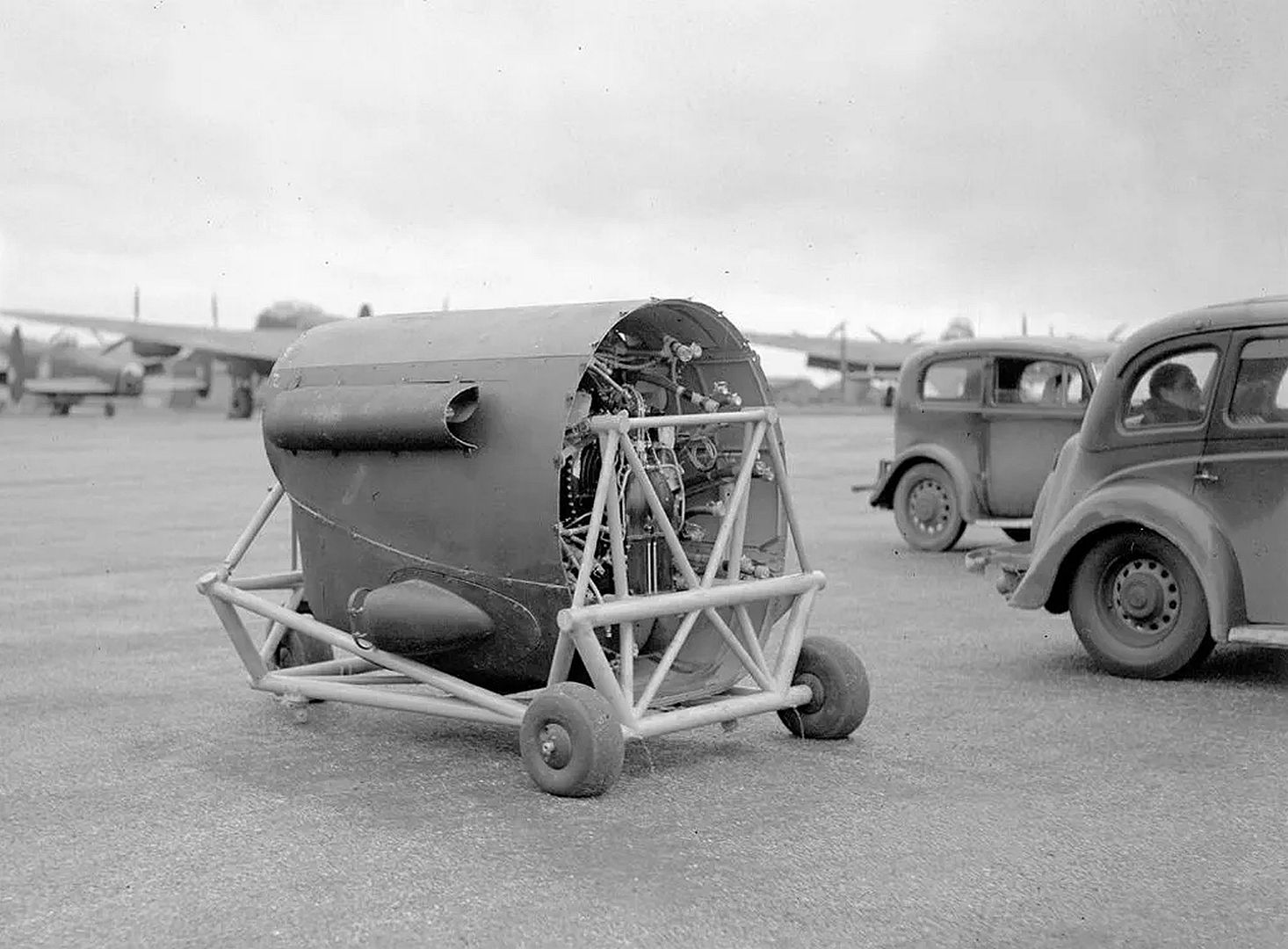











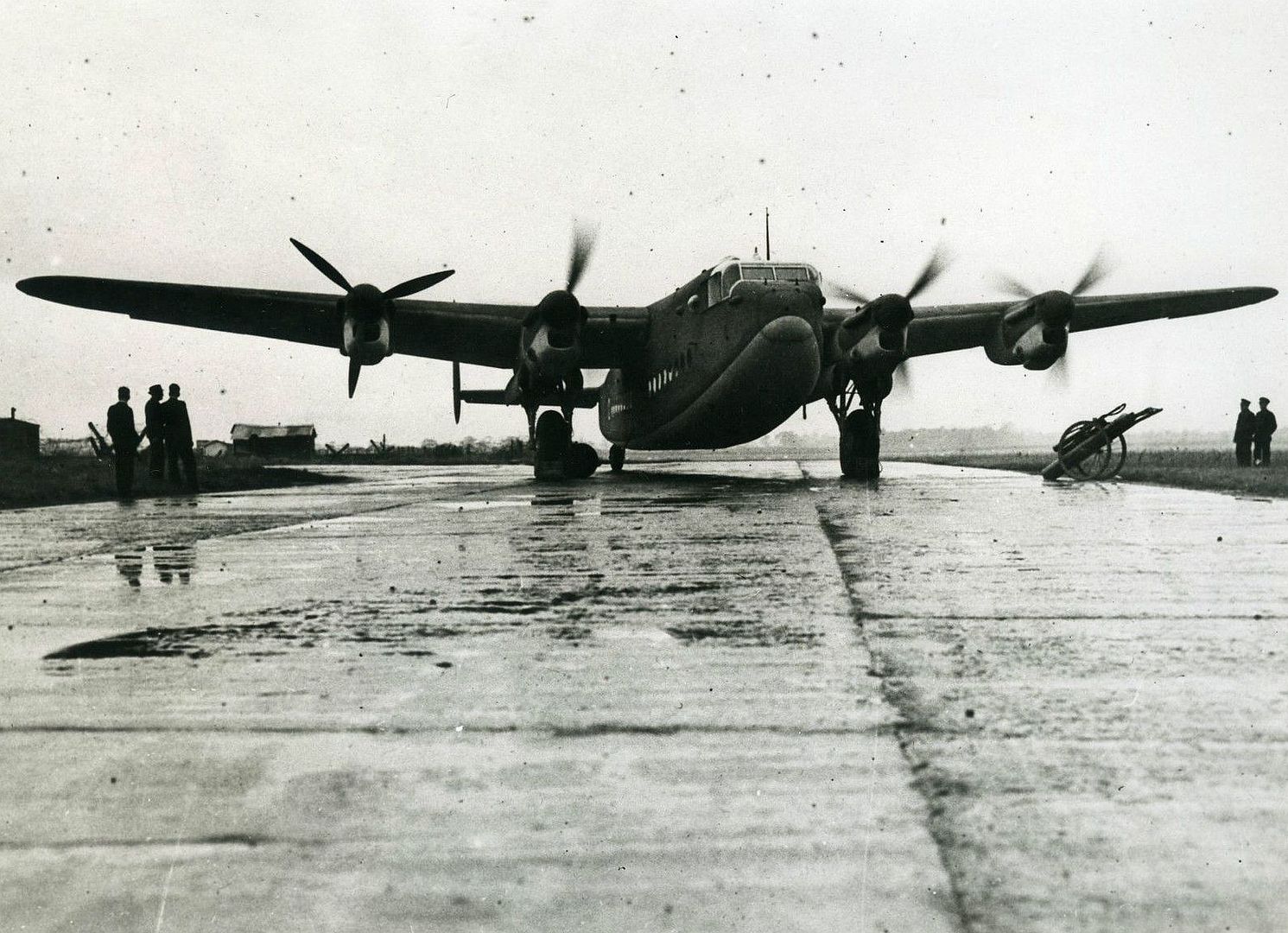


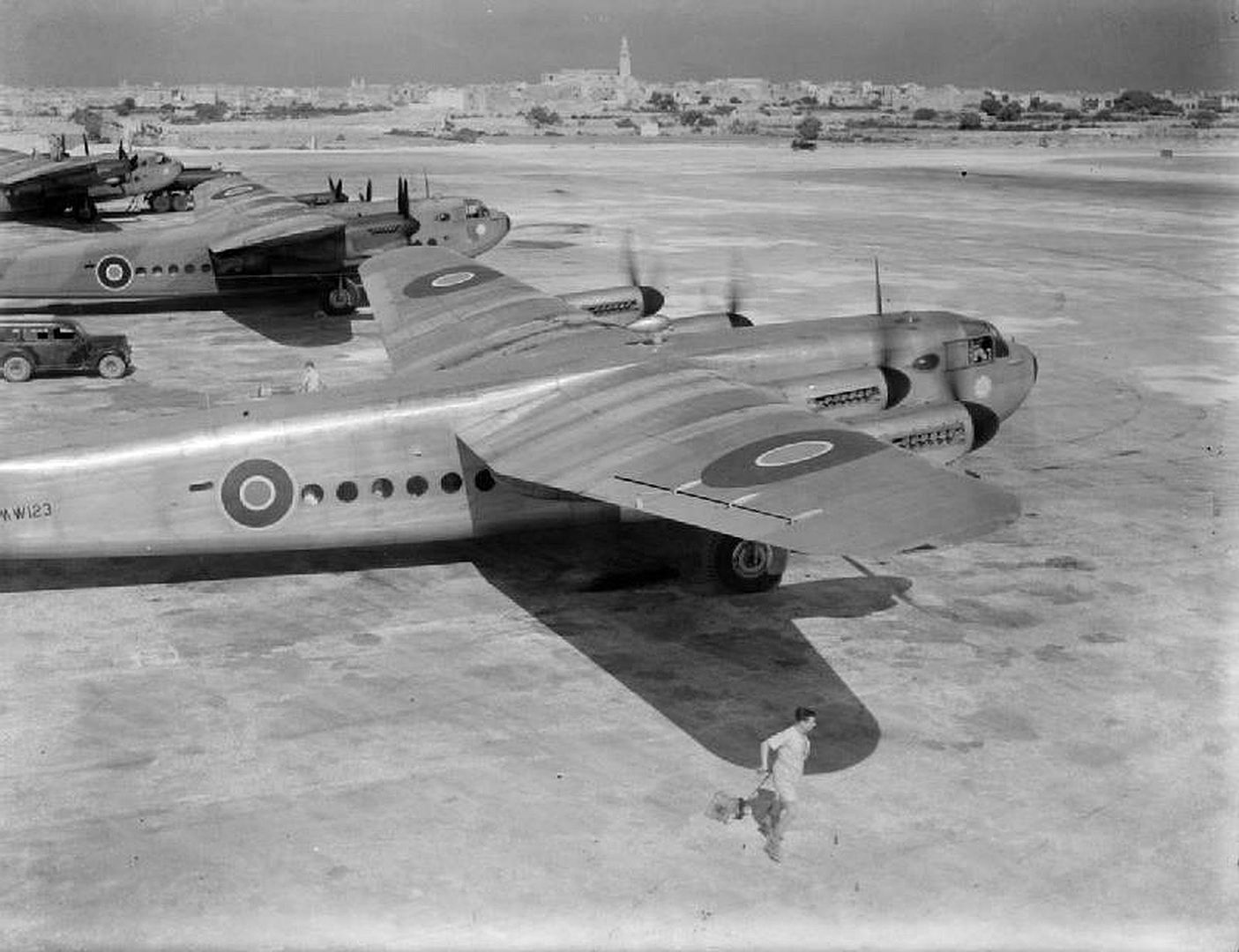



In 1954, the French Aéronavale procured five Yorks from the British Air Ministry and operated the type at Le Bourget for around a year.

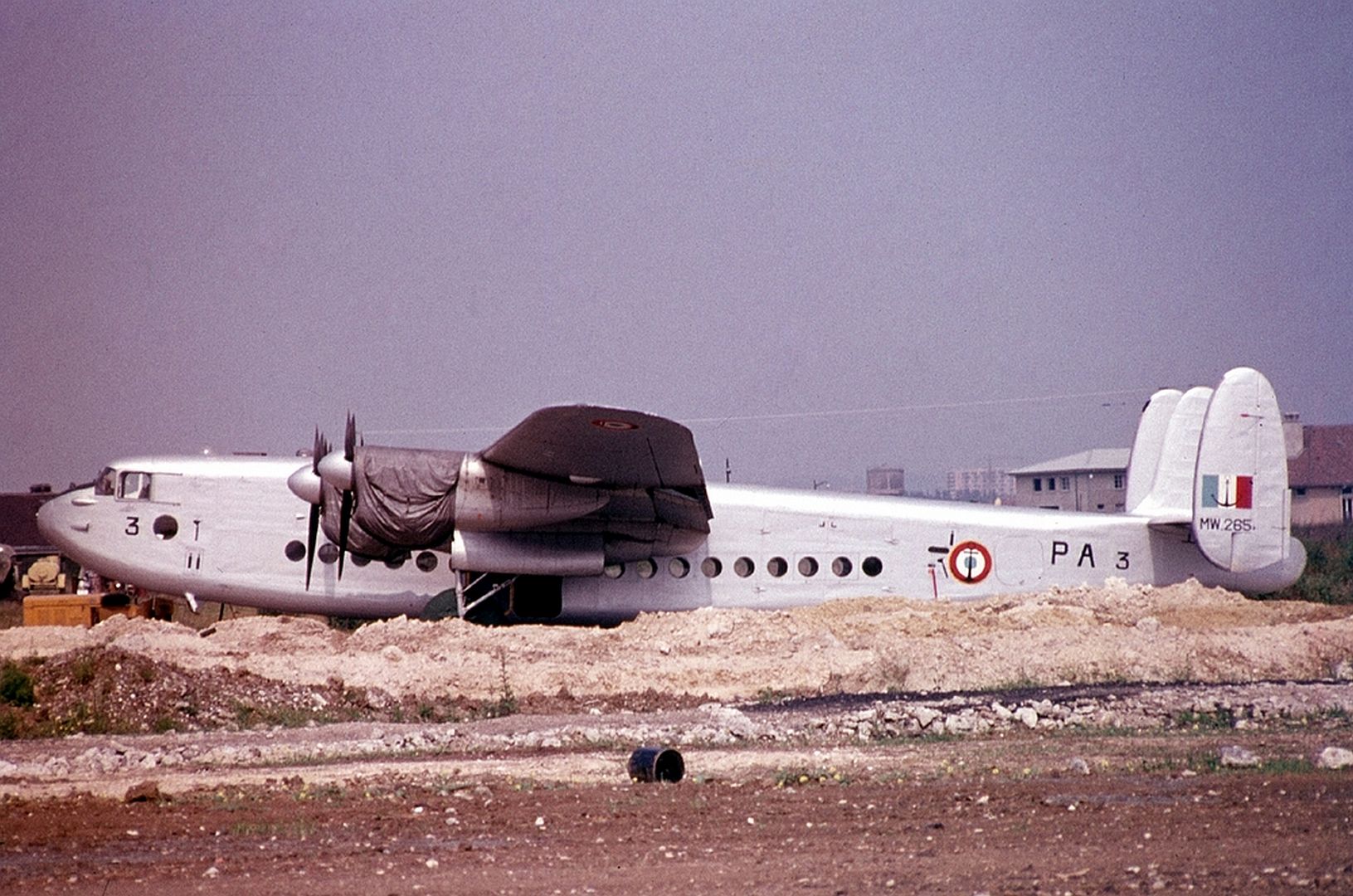
Civilian
On 21 February 1944, the first civilian York (G-AGJA), initially built for the RAF as MW103, received its airworthiness certificate, thus clearing its delivery shortly thereafter to the British Overseas Airways Corporation (BOAC). On 22 April 1944, the York inaugurated an initial UK-Morocco-Cairo route. Following the diversion of the first five RAF production Yorks to BOAC, it was decided to allocate a further 60 to the airline but in fact only 25 more were delivered to BOAC. Early BOAC operations were conducted in close collaboration with No. 216 Group RAF; this led to some early Yorks bearing a confusing combination of both civilian registrations and military external markings.
Flights were soon established to Johannesburg, South Africa, in conjunction with South African Airways; Yorks assigned to this route outfitted with a total of 12 sleeping berths in addition to passenger seating due to the journey time.The majority of BOAC's York fleet were fully furnished passenger airliners or as combi passenger-cargo aircraft.
In the post-war years, BOAC expanded its use of the York considerably, such as on its Cairo to Durban service, which had previously been operated by Shorts flying boats. Other airlines also adopted the type, such as its use by British South American Airways (BSAAC) on their routes to the Caribbean and South America, prior to their merger into BOAC in September 1949.
On 7 October 1952, BOAC withdrew its Yorks from passenger services, retaining the type for freight operations.BOAC's Yorks continued to operate freight schedules until November 1957 when the last example was withdrawn.After disposal by BOAC and BSAAC, their York fleets were purchased by several UK independent airlines and operated on both passenger and freight flights; these service often included long-distance trooping flights to Jamaica and other UK garrisons.The largest York operator out of the independents was Skyways.In 1964, the last Yorks were retired from service by Skyways and Dan Air.
When the Distant Early Warning Line (Dew Line) was being constructed in Canada in the late 1950s, the York was introduced as a freighter by Associated Airways to support the initiative, these being used later in ordinary airline service. At least one of the Yorks, CF-HAS, was retained, and was in service with Transair as late as 1961.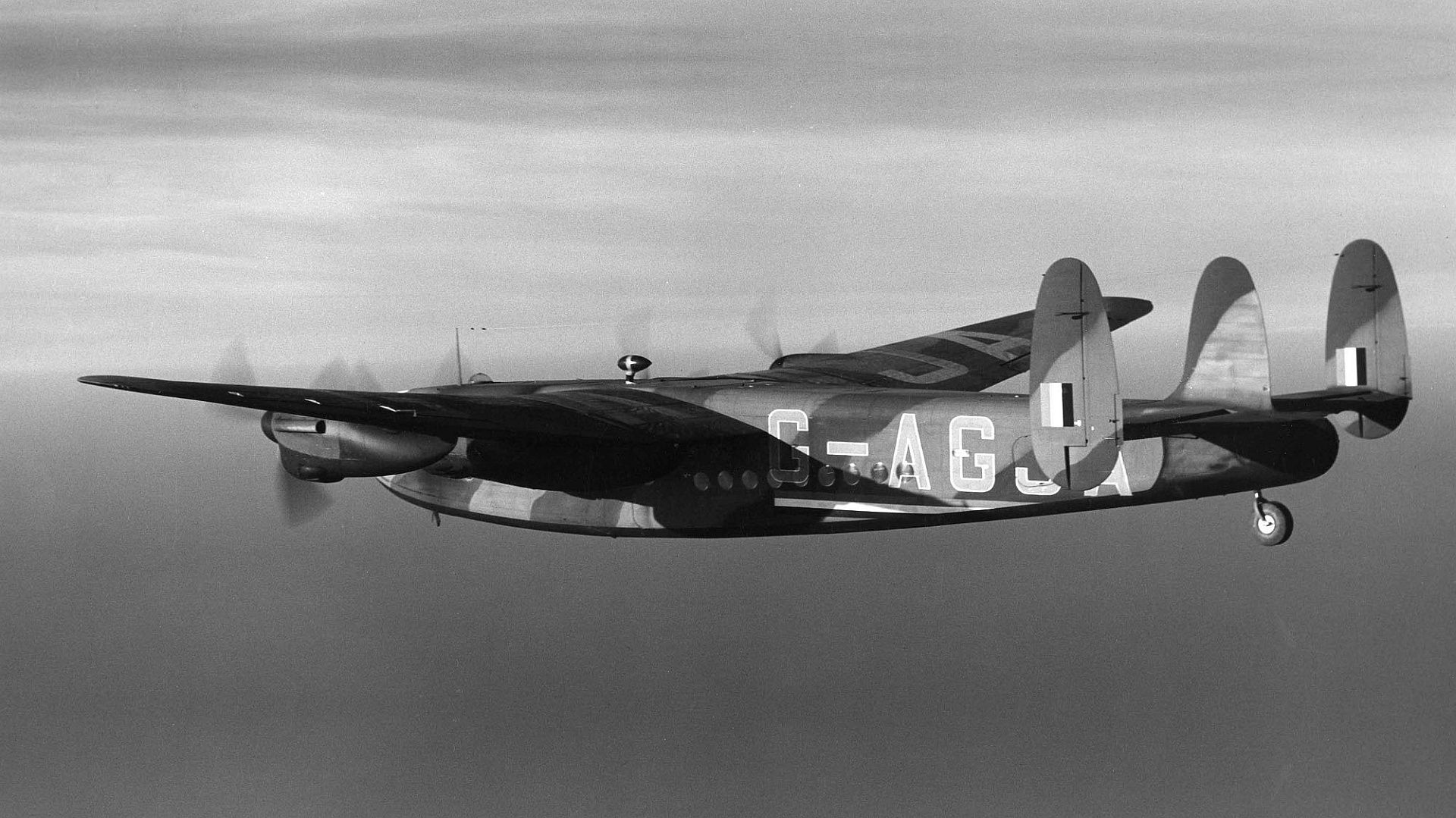













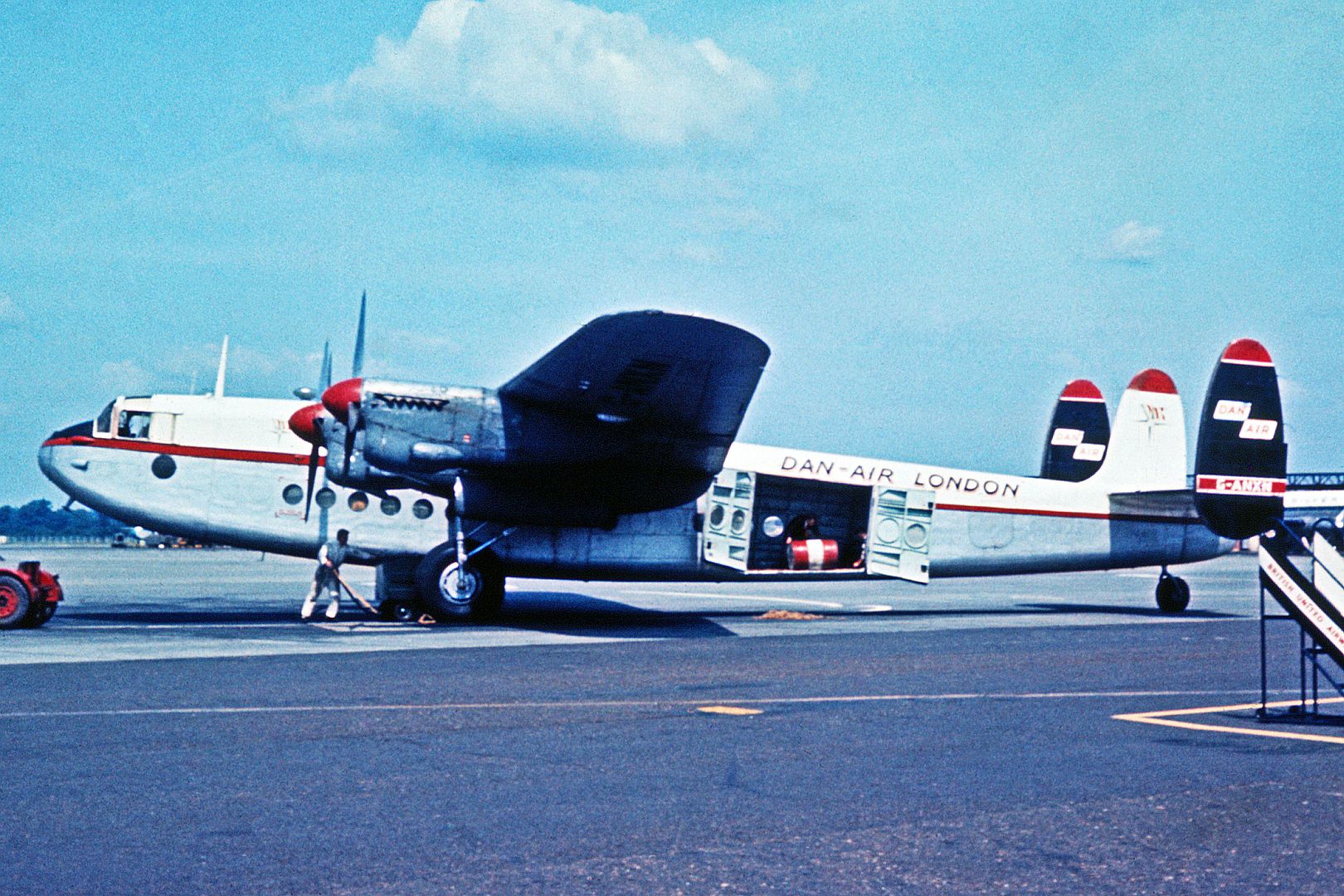
VIP service
The Avro York was, like its Lancaster and Lincoln stablemates, a versatile aircraft. One of the prototypes, LV633, Ascalon, was custom-built as the personal transport and flying conference room for Prime Minister Winston Churchill. Ascalon was to be fitted with a special pressurised "egg" so that VIP passengers could be carried without their having to use an oxygen mask. Made of aluminium alloy, the enclosure had eight perspex windows to reduce claustrophobia. It also had a telephone, an instrument panel, drinking facilities and an ashtray with room for cigars, a thermos flask, newspapers and books. Testing at RAE Farnborough found the "egg" to work satisfactorily. Avro said it was too busy with the new Lancaster IV (Avro Lincoln) work so it was never installed in Ascalon. It was considered for installation in the successor aircraft, a Douglas C-54B but the contractor Armstrong Whitworth decided it was impractical and the project was shelved. The whereabouts of "Churchill's Egg" is not known.


MW140, Endeavour, flew to Australia in 1945 to become the personal aircraft of the Duke of Gloucester, Australia's Governor-General.It was operated by the Governor-General's Flight from 1945 to 1947; it was the Royal Australian Air Force's only York.


Another York, MW102 was fitted out as a "flying office" for the use of the Viceroy of India and C-in-C South East Asia Command, Lord Mountbatten. During its first major overhaul by Avro at Manchester (Ringway) in 1945, the aircraft was repainted a light duck egg green, a shade intended to cool down the aeroplane, instead of its former normal camouflage colour scheme.
South African leader Jan Smuts also used a York as his personal transport. Air Chief Marshal Sir Trafford Leigh-Mallory was killed on 14 November 1944, while flying to his new posting in Ceylon to take command of Allied air operations in the Pacific, when York MW126 struck a ridge in the French Alps in a blizzard, 30 miles (48 km) south of Grenoble, France. His wife Dora and eight aircrew also died. The wreckage was found by a villager in June 1945.
And below Avro York presented to French general DeGaulle by the British governnent, for his personal use.

Specifications
General characteristics
Crew: 5 (two pilots, navigator, wireless operator, cabin steward)
Capacity: 56 passengers
Length: 78 ft 6 in (23.93 m)
Wingspan: 102 ft 0 in (31.09 m)
Height: 16 ft 6 in (5.03 m)
Wing area: 1,297 sq ft (120.5 m2)
Empty weight: 40,000 lb (18,144 kg)
Gross weight: 65,000 lb (29,484 kg)
Powerplant: 4 × Rolls-Royce Merlin 24 V-12 liquid-cooled piston engines, 1,280 hp (950 kW) each
Propellers: 3-bladed constant-speed propellers
Performance
Maximum speed: 298 mph (480 km/h, 259 kn)
Range: 3,000 mi (4,800 km, 2,600 nmi)
Service ceiling: 23,000 ft (7,000 m)
Rate of climb: 820 ft/min (4.2 m/s)
Wing loading: 54 lb/sq ft (260 kg/m2)
Power/mass: 0.079 hp/lb (0.130 kW/kg)
Post a reply
- Go to Previous topic
- Go to Next topic
- Go to Welcome
- Go to Introduce Yourself
- Go to General Discussion
- Go to Screenshots, Images and Videos
- Go to Off topic
- Go to Works in Progress
- Go to Skinning Tips / Tutorials
- Go to Skin Requests
- Go to IJAAF Library
- Go to Luftwaffe Library
- Go to RAF Library
- Go to USAAF / USN Library
- Go to Misc Library
- Go to The Ops Room
- Go to Made in Germany
- Go to Campaigns and Missions
- Go to Works in Progress
- Go to Juri's Air-Raid Shelter
- Go to Campaigns and Missions
- Go to Works in Progress
- Go to Skinpacks
- Go to External Projects Discussion
- Go to Books & Resources
